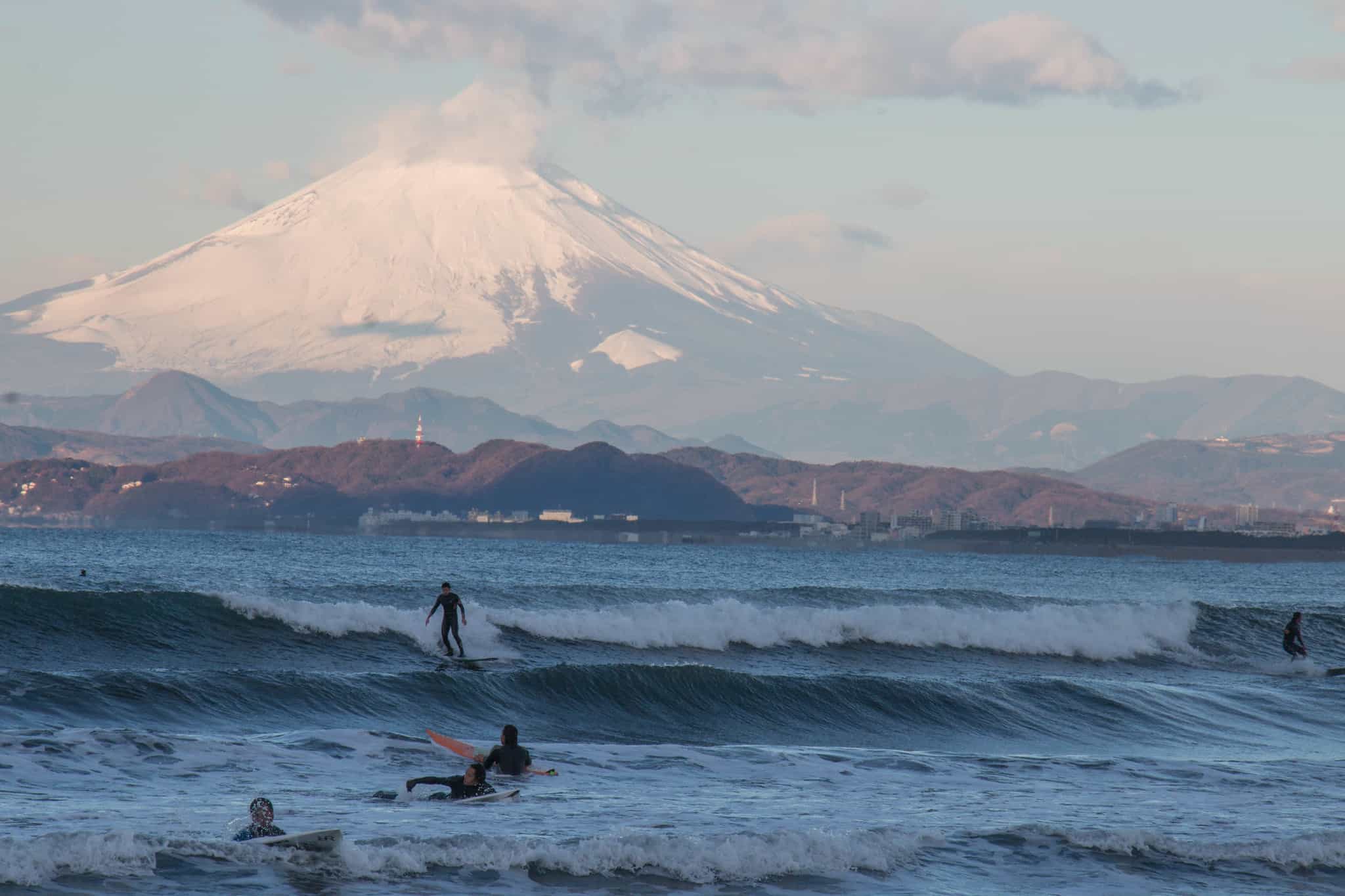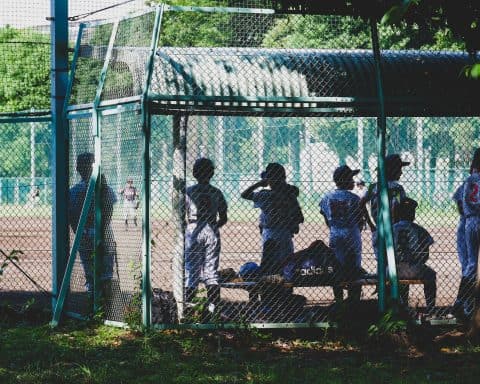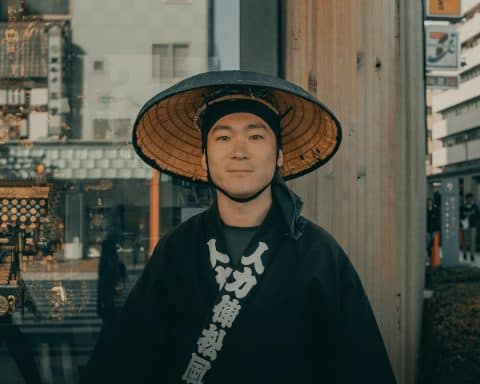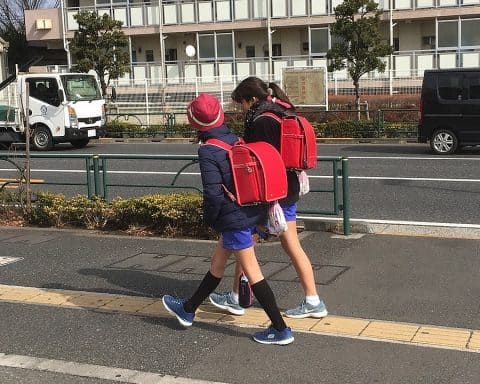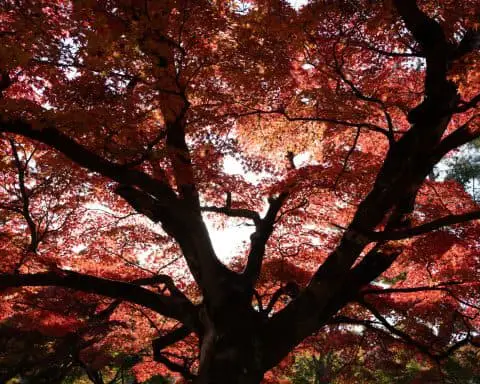As an Amazon Associate I get commissions for purchases made through links in this post. At no extra cost to you! ^_^
Last week I went surfing for the first time in Cornwall. It got me wondering (as always) about Japan and whether it was even possible to surf over there?
As it happens Japanese surf culture and infrastructure is one of the biggest in the world. With more spots than you could surf in a lifetime, surfing in Japan is something you absolutely have to try if you find yourself over there at the right time of year.
When you think of Japan, I imagine you think of the stereotypical few things that everyone else does.
Samurai, Noodles, politeness, trains that run on time, anime, cute things… You get the idea…
But have you ever heard ‘Japan’ and ‘surfing’ in the same sentence? I already knew that Japan is great at baseball, but surfing? I didn’t know anything about it until I researched it a few days ago.
Let’s take a look at what makes surfing Japan’s biggest secret!
The history of surfing in Japan

When did surfing start in Japan?
Believe it or not, ‘Surfing’ in Japan dates all the way back to the Edo period (1603-1868). In 1821 a Japanese Haiku poet by the name of ‘Dokurakuan Kanri’ describes a beach scene where young children play in the waves with Itago.
Itago (板子, いたご) are wooden planks or boards originally meant to aid non-swimmers in the water for a safe experience. So whilst we know that in 1821 the idea of surfing may have surfaced, it’s a far cry from what you or I know it as today.
Fast forward to the 1950s, and the true immersion of surf culture finally begins to penetrate its way through Japan’s insular society.
This came in the form of initial exposure to Western media as well as soldiers based in Japan (specifically Yokosuka) that began to bring their longboards over to surf at Shonan and Chiba.
Couple this with the increasingly rising economy of Japan in the early 80’s and the again increased exposure to Western culture, and surfing began to be seen as commonplace amongst the Japanese people.
Surfing in Japan – Modern day
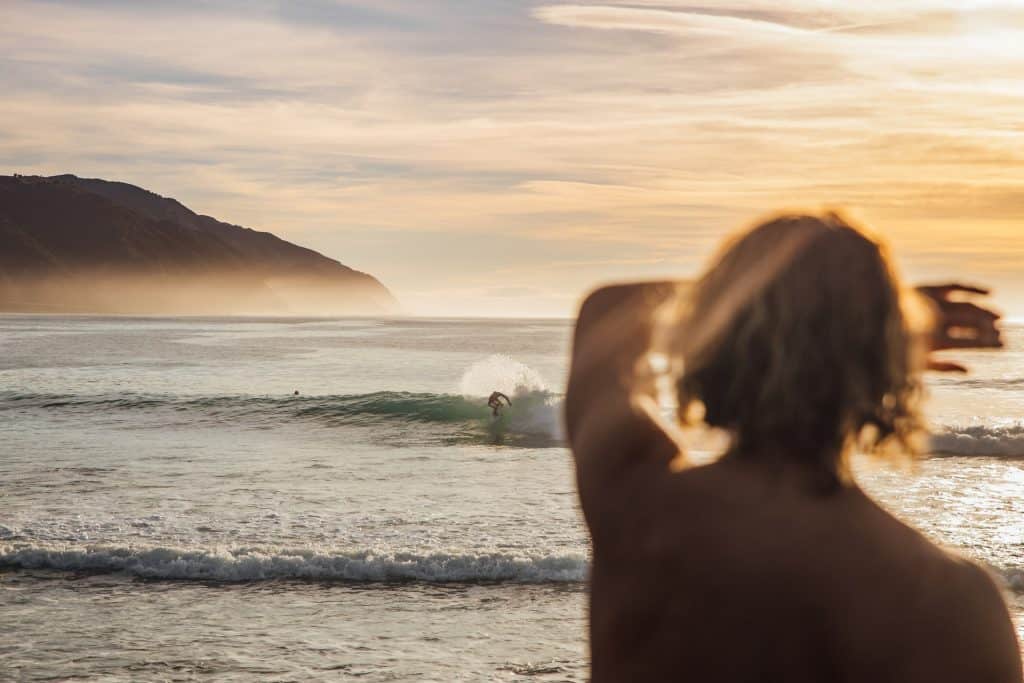
Does Japan have good surfing?
In short? YES!
Though the words ‘Surfing’ and ‘Japan’ may not frequently find themselves together, the country has enough coastline for more than just a few fantastic spots.
29,000km worth of coastline to be exact. That’s more than enough for some good surf!
In fact, it could be pretty overwhelming for Japanese surfers due to the nearly 7,000 islands to chose from.
So let’s take a look at some of the best choices they have when it comes to finding the best places to surf in Japan:
Hint: If you’re planning to try your hand (or feet!) at surfing in the near future, grab this beginner friendly surf board to make sure you have the best time possible! Or if you’re looking to take it a bit easier, this paddle board should be what you’re looking for. And if neither fit your current situation because you just can’t get out to the water yet, there’s no harm in improving your balance (for when you eventually shred Nazare’s 100ft wave) with this balance board!
Best places to surf in Japan
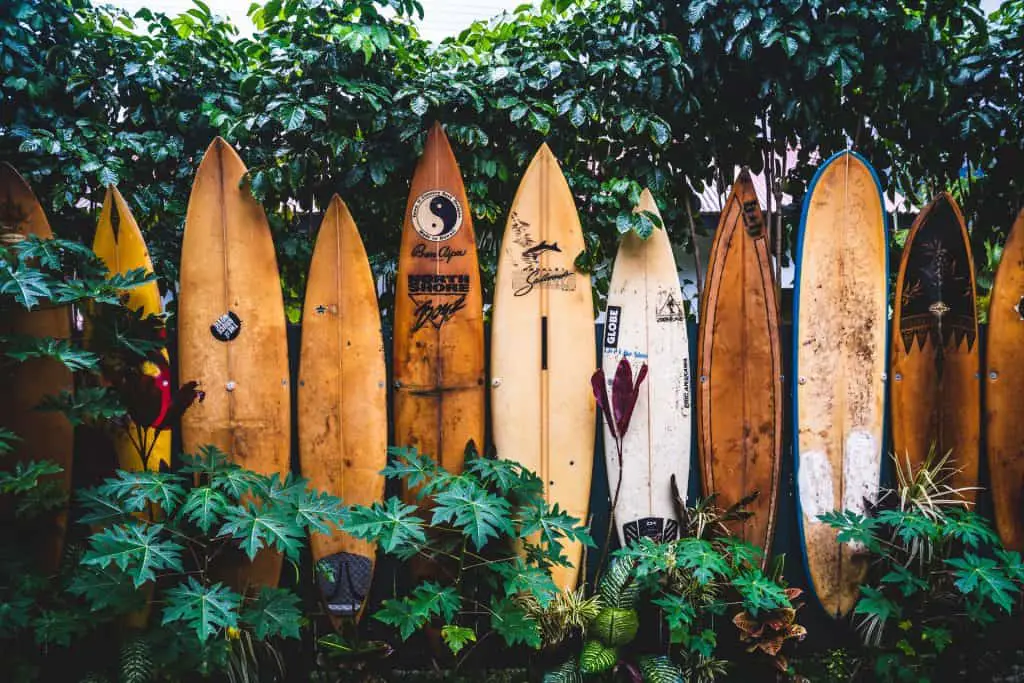
Kanto region: The closest place to surf from Tokyo
1. Shonan – Kugenuma beach
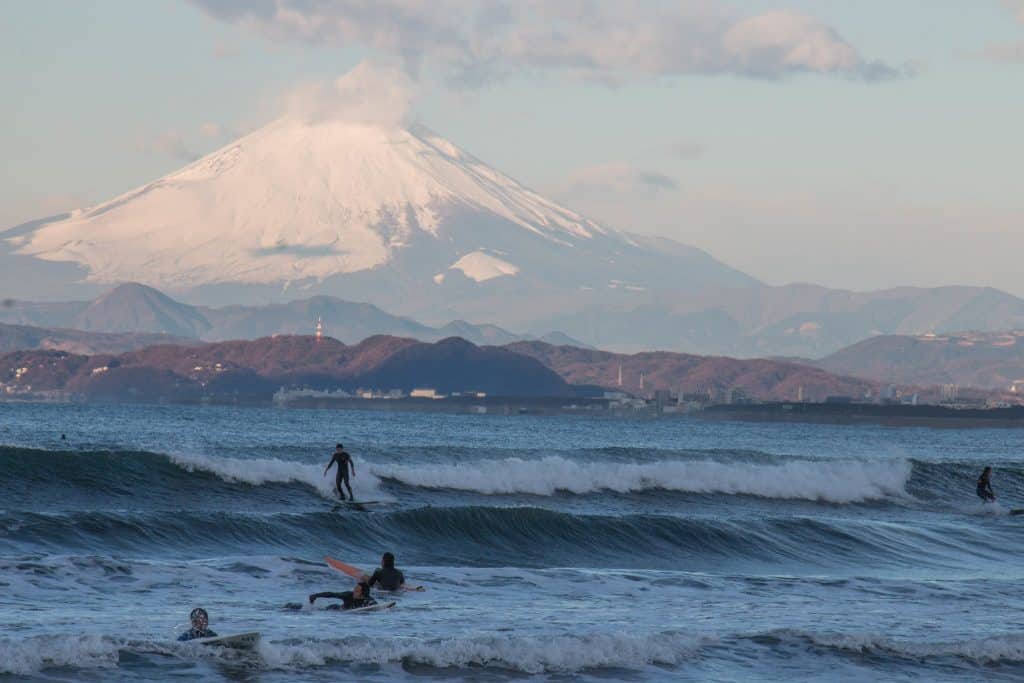
There are some particularly spectacular places to surf across the world, no doubt. But perhaps none are as awe-inspiring or grounding as Kugenuma beach.
Only an hour away by train, and even less by car, kugenuma beach is a must-visit location if you’re visiting the country during summer and want a couple of days on the water away from the big city.
I’m really not much of a surfer (at the moment, world championships 2050 pending ;)) but to stand up on a couple of waves with a backdrop of Mount Fuji is an absolute bucket list dream!
The surf opportunities stretch out over almost half of Sagami Bay so you shouldn’t be short on accommodation options or beach space!
2. Chiba – Kujukuri line
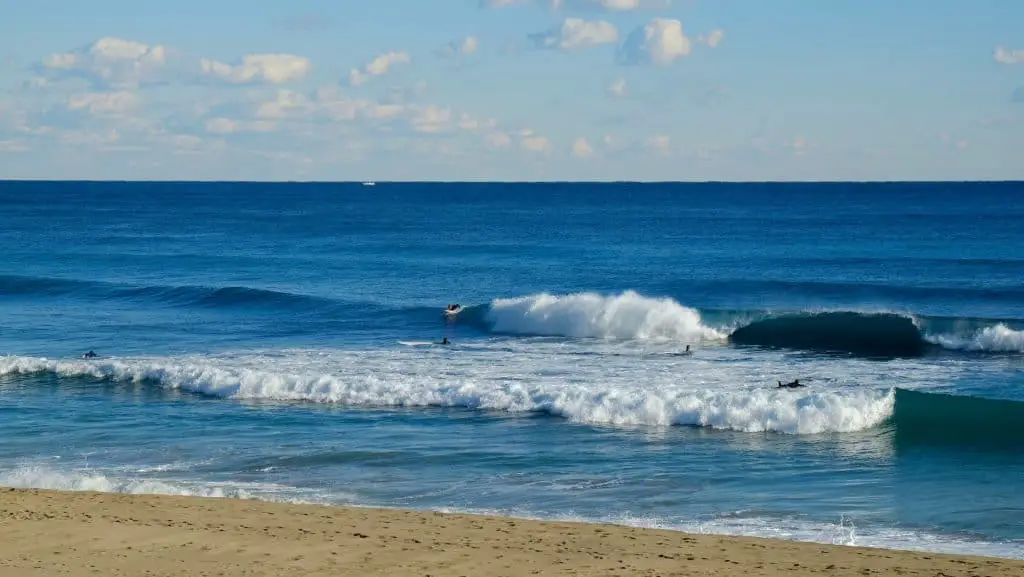
Chiba is another destination that’s only a stone’s throw away from the country’s capital of Tokyo.
Unlike many of the other surf spots on this list, all the areas are more or less in a row. That means if one spot doesn’t have the conditions you’re after, you’ll be able to easily move on down to the next one until you’re satisfied.
Kujukuri – The longest stretch of beach in Chiba is Kujukuri. It’s here that you’ll find most of the surf spots, surfers, and rental shops.
According to Tokyo Creative, some other great beaches on the Kujukuri line worth checking out are Katagai Beach, Shirako Beach, and Ichinomya Beach.
Apparently, these spots are hit head-on by waves from the Pacific making them suitable for experienced surfers only, or those who want to push themselves (safety first, kids!)
A little further down is Ohara Beach. Smaller than Kujukuri but well worth the drive!
Hebara and Ohara Beach – Great for families and beginners. These spots don’t have the same harsh conditions that some of the above beaches do. If you’re just looking to take it easy for the day or you’re with family and friends that haven’t surfed yet, this is the place to be.
If you’re interested in surfing this area, I urge you to read this article to make sure you can make the most of your trip.
The Islands – How to surf Japan any time of the year
Japan is at the best of times, muggy as hell!
It’s no surprise then that the southern tip of Japan which plays host to many islands gets extremely hot each year.
So hot in fact, that you can comfortably surf all year round without too much hassle.
Let’s take a look at the best places to surf in Japans southernmost point:
3. Amani Island – Kagoshima
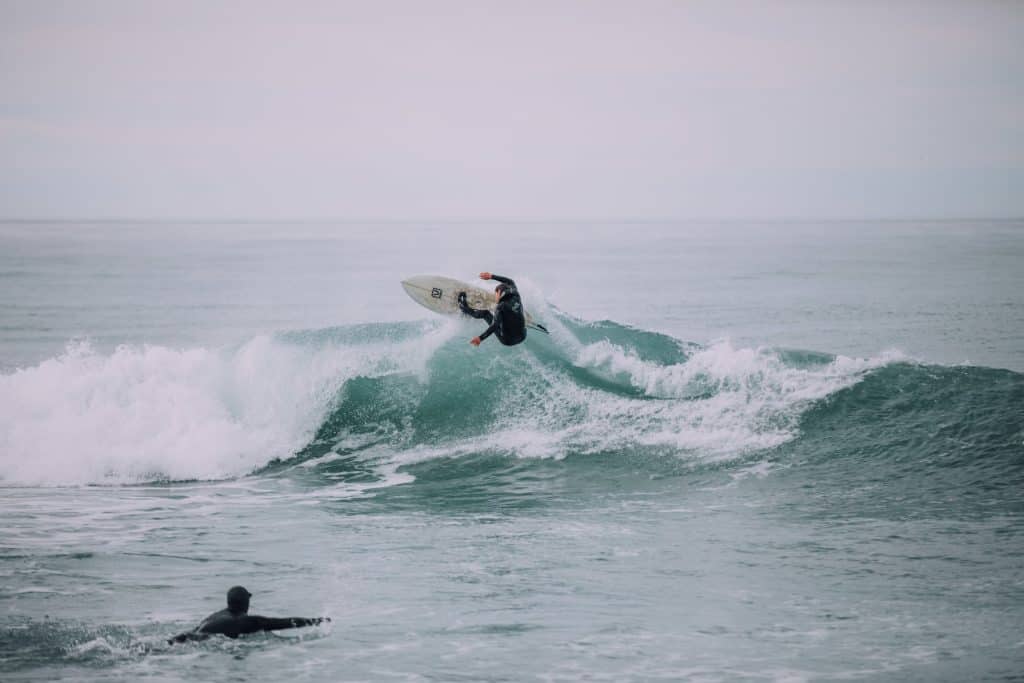
At around 5 hours away from Osaka (if you’re spendy enough to take the plane), it’s unlikely you’ll stumble upon Amani Island unless you’re purposefully aiming for it.
Aside from decent surf, Amani Island seems to offer similar beaches, landscapes, and activities as mainland Okinawa but is likely to be a lot less busy as people just don’t know about it.
If you’re considering a holiday to the south of Japan, take a look at this video by Currently Hannah which takes you on a whistle-stop tour of the island. It might just be that quiet and tropical summer escape you’ve been after!
Though its surf schools and shops might be more limited than mainland Okinawa (and Kanto), you’ll likely have a far more private experience here than you will in any other surf location in Japan. And luckily enough they’re pretty much all on the north side of Amani nearest to the airport, so no need to hike across the entire island if that’s not your thing!
So if you aren’t too worried about riding the best waves and just want a casual place to learn, Amani Islands are probably your best bet.
4. Okinawa
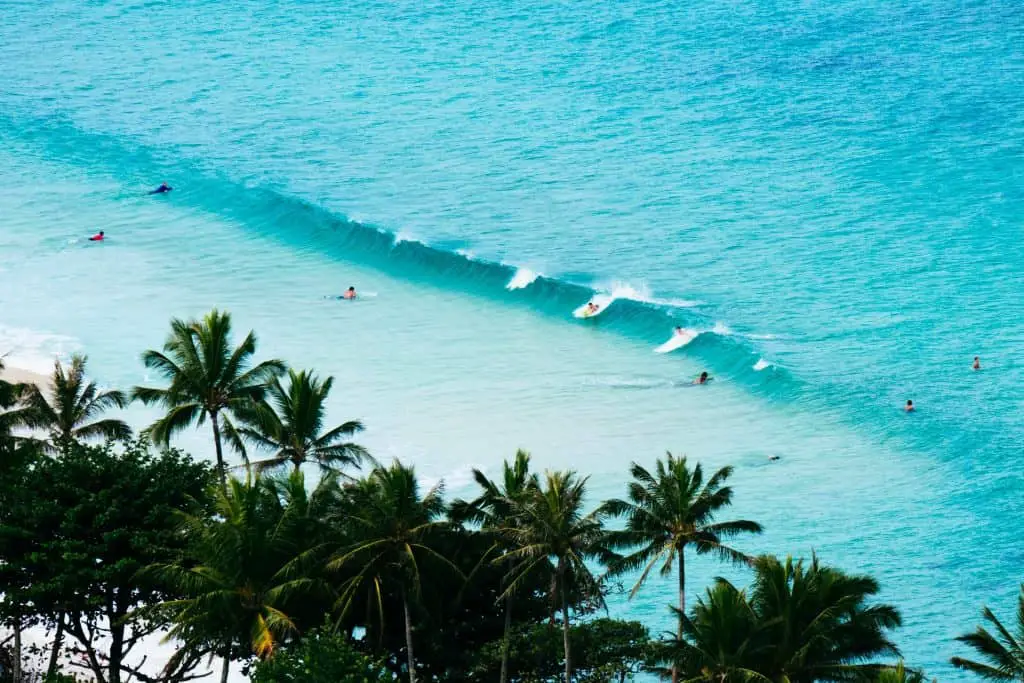
Where is the best place to surf in Okinawa?
Unfortunately, I don’t know… But I do know someone who does!
Scott Ellison writes for Oki Island Guide so if there’s a question about Okinawa, it’s very likely he’ll know the answer!
According to this article, he wrote about surfing in Okinawa, there are a couple of fantastic spots on the island to jump on a board.
- Cape Kyan 喜屋武岬 – The most reliable surf spot on Okinawa. Also known as ‘Suicide’ as it’s a spot where many Okinawans committed suicide during the battle of Okinawa.
- Ikei – Another extremely reliable surf spot on the island where the swell can get absolutely huge in the right conditions.
Caution: Whilst surfing in Okinawa and the surrounding islands can feel like surfing in a tropical paradise, many of the waves are reef breaks. This means wiping out becomes more dangerous and the risks of badly injuring yourself are greater. Aside from surfing with an experienced boarder I advise wearing a wetsuit or body protection and ideally a helmet if you can find one.
Shikoku – The best place to surf in Japan
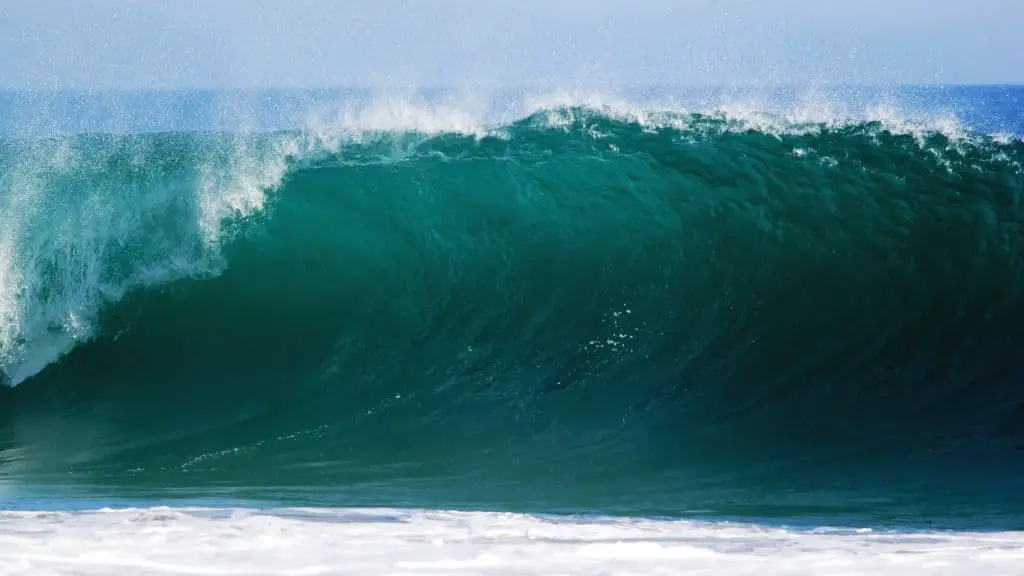
Shikoku is the smallest of Japan’s islands but quite possibly the best place to surf in the entire country.
Ikumi 生見 – A popular beach for beginners with great seasonal activity
Niyodo 仁淀 – The mouth of the river Niyodo, perhaps not as spectacular as Kaifu in the right conditions but still nothing to pass off.
Shishikui 宍喰 – An easily accessible beach that’s great for beginners or those looking for a challenge
Kaifu 海部 – Maybe the best wave in Japan. Located at the mouth of the river Kaifu, when conditions are right this spot can produce an absolute world-class wave.
Interested in learning the best places to surf in Shikoku but want more detail? Head over to Low Pressure for all your Shikoku surfing-based needs!
Wave height at Kaifu – Japan’s biggest wave
A quick check on Magic Seaweed reveals the waves at Kaifu often get up to 9ft. It’s no wonder national and international surf competitions are regularly held here.
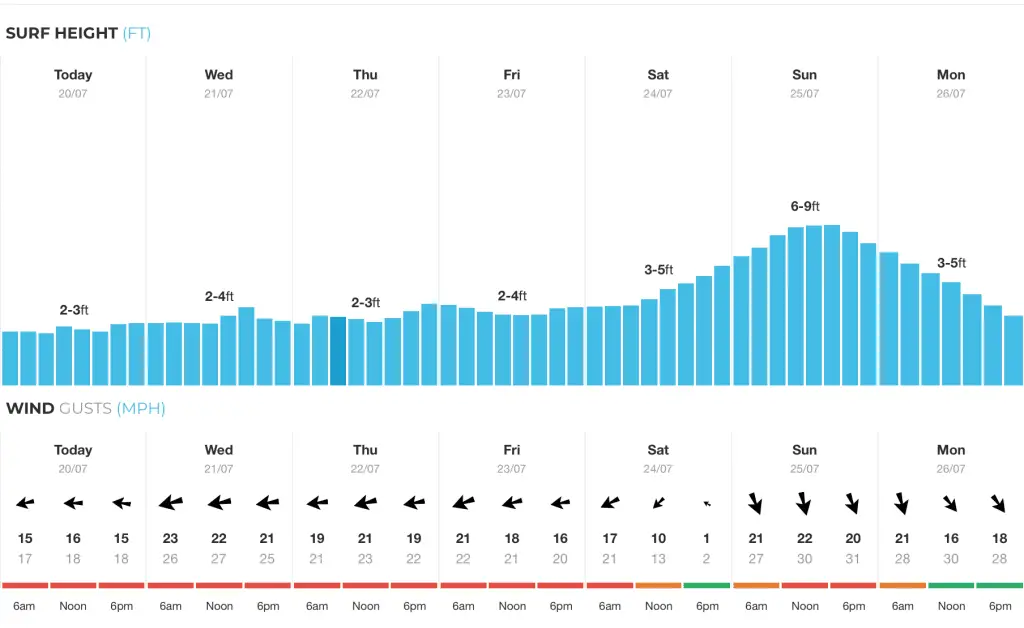
Will Tokyo olympics 2020 have surfing?
Although the games have been delayed a year, they’ll still be the debut of surfing at the Olympic Games. Japan isn’t known for it’s surfing, but by the end of the olympics, it will hopefully shed light on the miriad of surfing spots Japan has to offer.
Where will they be held?
The Tokyo Olympics 2020 will hold its surfing event in Shidashita Beach, Chiba. It’s a stretch of beach that’s no stranger to hosting surf events due to its continued consistency to provide good surf.
It’s this consistency that ultimately made it the favored destination for the 2020/21 Olympics. Due to it’s position on the map (the Far East side of Japan) Shidashita Beach falls prey to the conditions from the North, East, and South of the Pacific Ocean making it almost guarantee it’ll catch some good swell.
Update: I watched the surfing on TV when the olympics finally got around to being shown, and it was epic!
So, Japan has a pretty big surf culture then?
I think it’s clear to see that after everything we’ve looked into, Japan has some astounding surf spots and an equally interesting surf culture history.
Although the country isn’t instantly associated with such sports, it’s always great to delve into a part of Japan’s history and modern culture that few people probably know about.
If you’re looking to travel to Japan, is surfing something you’ll give a try? I hope so, because I surely will do!



